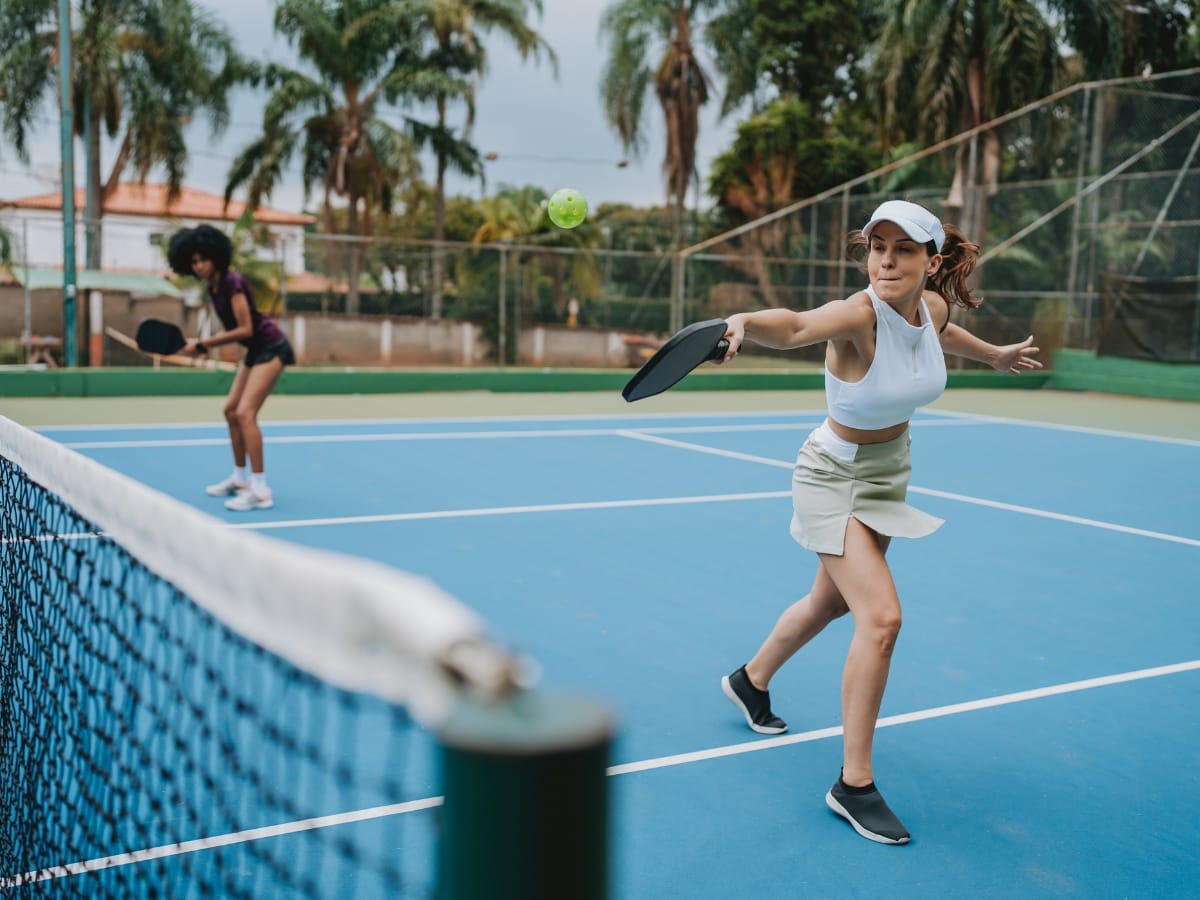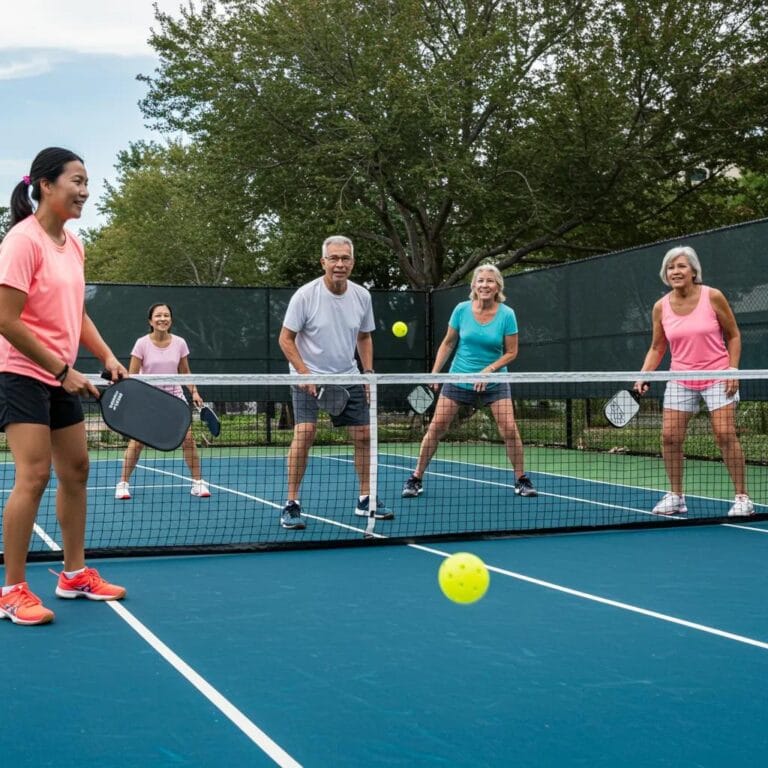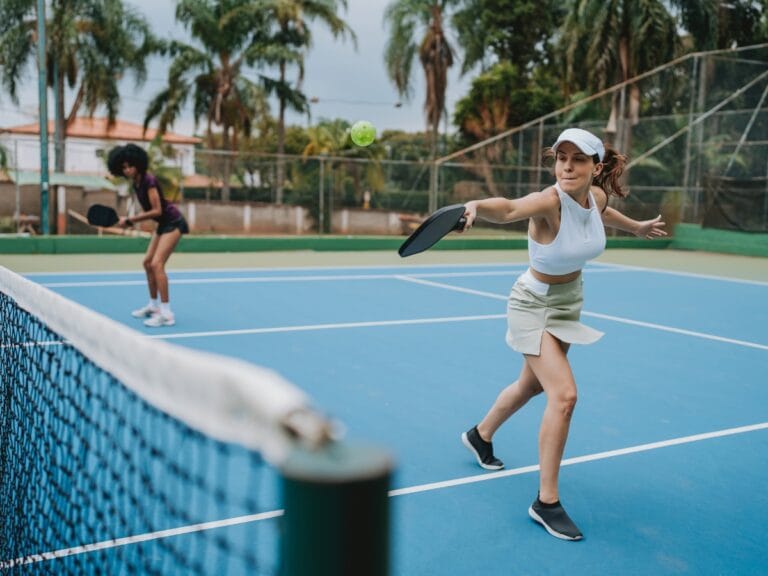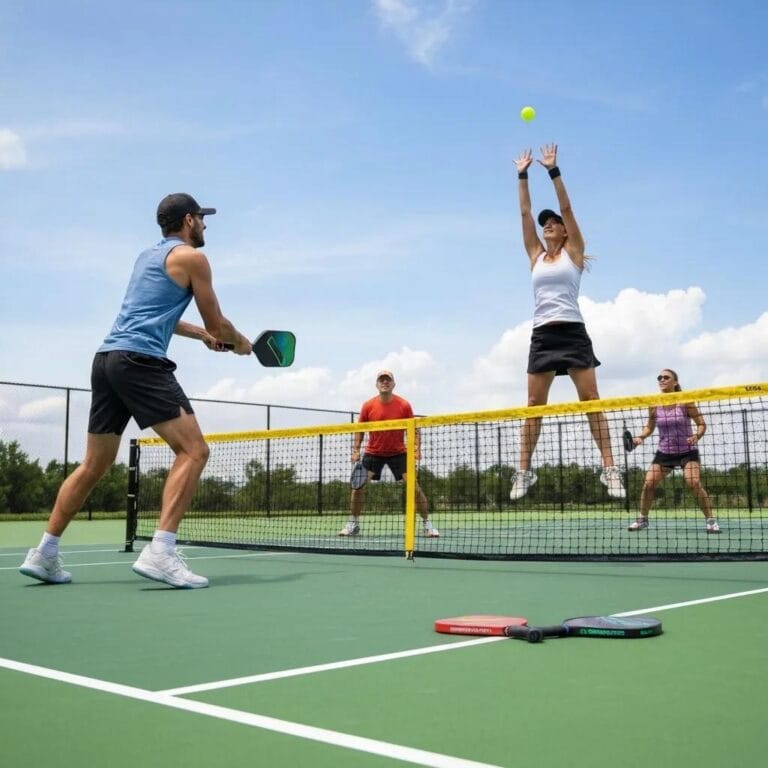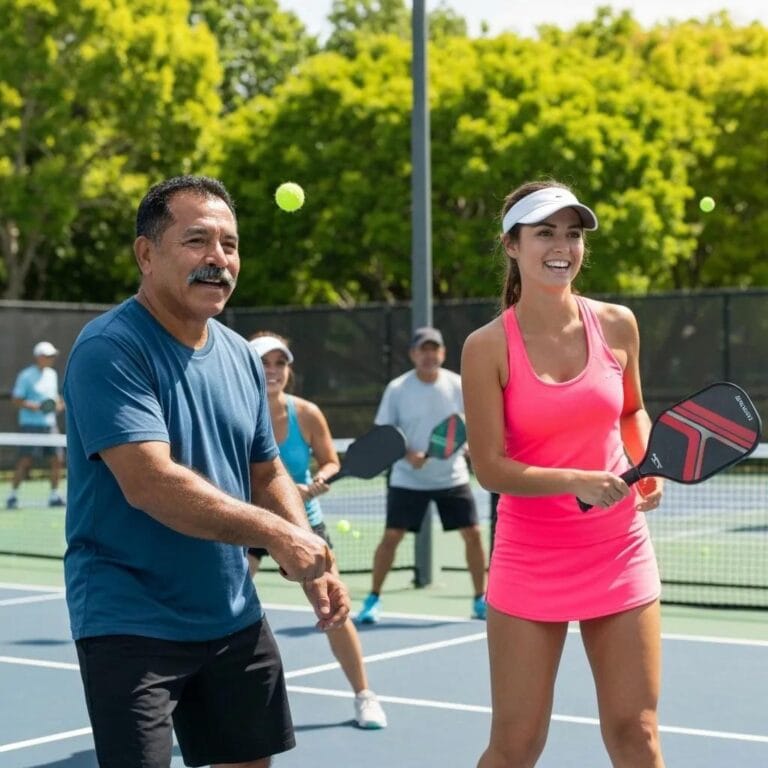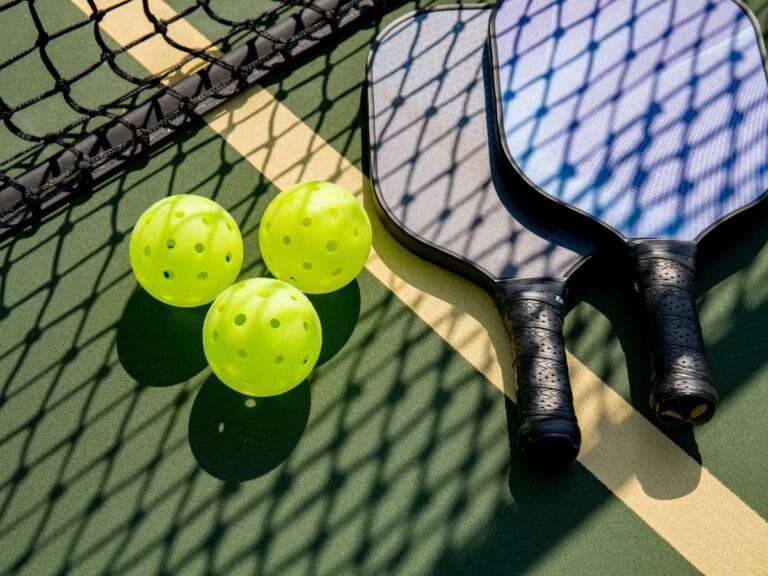Choosing between pickleball vs tennis often comes down to your lifestyle, fitness level, and what you want from a racket sport. While tennis offers a vigorous, high-intensity workout with deeper historical roots, pickleball provides a social, accessible game that’s easier on the joints and quicker to learn. Whether you’re drawn to the powerful serves and expansive court of tennis or the fast-paced, strategic dinking of pickleball, understanding the key differences in gameplay, cost, and community can help you pick the perfect fit. In this guide, we’ll compare everything from equipment and court size to physical demands—so you can confidently choose the sport that matches your energy, goals, and sense of fun.
Pickleball vs Tennis: Pros, Cons, and Which Is Right for You
What’s the Big Deal? Pickleball vs Tennis Differences
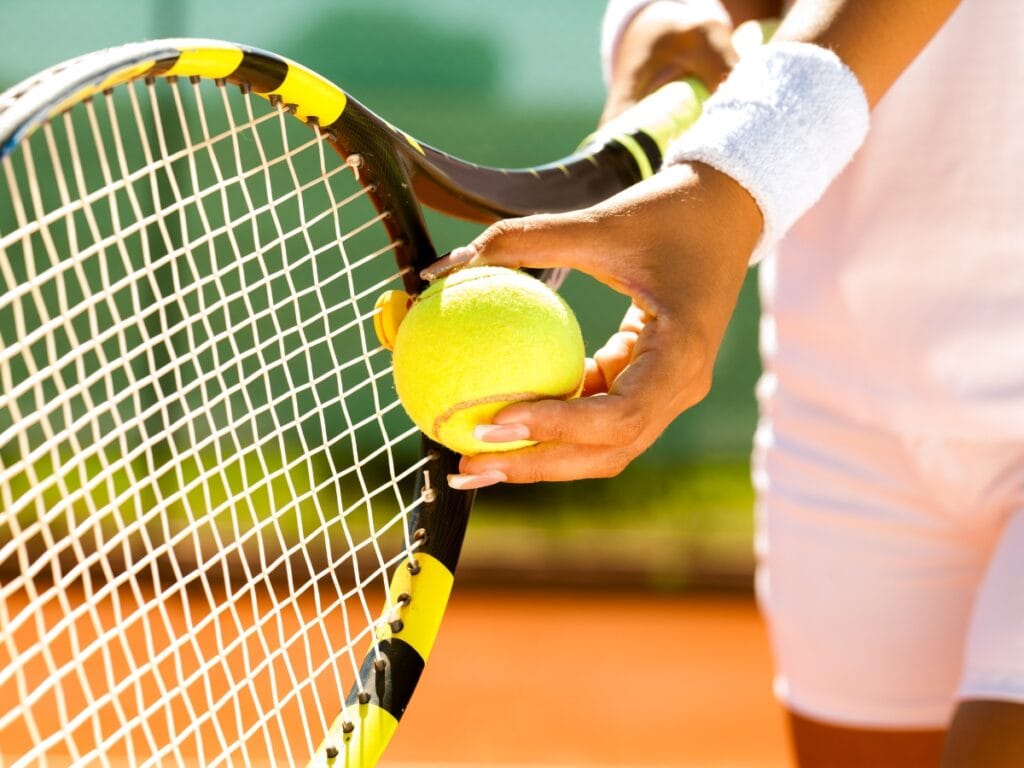
Pickleball and tennis may share a net and a ball, but they offer two very different playing experiences. Pickleball is often described as a mix of tennis, badminton, and ping-pong, played on a smaller court that keeps the action fast and close. Tennis is the classic full-court game, known for its powerful serves, longer rallies, and emphasis on endurance. The two sports differ in nearly every aspect, from the size of the playing area and the equipment used to how points are scored and how players interact on and off the court. Understanding these differences can help you choose the one that best fits your goals, whether you’re after intense cardio or a more social, accessible game.
Court Size Showdown: Pickleball vs Tennis
The size of the court is one of the most noticeable differences between pickleball and tennis. A standard pickleball court measures 44 by 20 feet, which is less than half the size of a doubles tennis court at 78 by 36 feet. This smaller court changes the pace and feel of the game. In pickleball, rallies are shorter, footwork is quicker, and positioning matters more than raw speed. Because players cover less ground, the game is easier on the joints and often feels more approachable for beginners or older athletes.
Tennis, on the other hand, demands more running and endurance. Longer sprints and broader coverage mean players rely heavily on speed, stamina, and powerful strokes. This difference in court size shapes not only the physical demands but also the style and strategy of play in each sport.
Gear Up: Paddles vs. Rackets and the Balls They Use
The equipment used in each sport also affects how the game is played. Pickleball players use solid paddles made from lightweight composite materials, typically weighing between 7 and 9 ounces. The ball is a hollow plastic design with holes, which slows its bounce and flight path. These features make it easier to control shots and keep rallies going, even for newer players.
Tennis rackets are larger, strung, and heavier, usually weighing around 11 to 12 ounces. Combined with a pressurized felt ball that bounces higher and faster, this setup produces more power and speed, requiring precise timing and strong technique. These equipment differences contribute to the distinct feel and tempo of each sport.
Rules of Engagement: How Pickleball and Tennis Play Out
The rules of pickleball and tennis influence how each game unfolds. In pickleball, serves are underhand and must land diagonally across the court, while tennis serves are overhand and often used as powerful offensive weapons. Pickleball includes a 7-foot “kitchen” near the net where volleying is not allowed, adding a layer of strategy to net play. Tennis allows volleys from anywhere near the net, which encourages aggressive approaches.
Scoring is another key difference. Pickleball uses side-out scoring, with games typically played to 11 points and a requirement to win by two. Tennis is structured into games and sets, with advantage scoring adding complexity and length to matches. Pickleball also has a unique “two-bounce” rule, requiring the ball to bounce once on each side before volleys are allowed, slowing the pace and emphasizing placement over power.
Sweat Equity: Physical Demands and Injury Risks
Both sports offer great exercise but challenge the body in different ways. Pickleball’s smaller court and slower ball emphasize agility and quick reflexes without as much strain on the knees or hips. Tennis requires more intense physical effort, with longer rallies, powerful serves, and explosive lateral movements. As a result, injuries in pickleball often involve the ankles or shoulders, while tennis players are more prone to issues like tennis elbow, knee strain, and shoulder overuse.
Social Scene: Community Vibes in Pickleball vs Tennis
The culture around each sport also differs. Pickleball is often played in doubles with rotating partners, drop-in sessions, and open play formats, making it highly social and community-focused. Tennis tends to be more structured, with organized leagues, scheduled matches, and club memberships shaping the experience. Pickleball’s shorter games also allow more frequent matches and interactions, while tennis matches can last significantly longer.
The Bottom Line
When comparing pickleball vs tennis, the choice often comes down to personal preference and goals. Pickleball offers a fast-paced, social, and low-impact game that’s accessible to players of all ages and skill levels. Tennis delivers a more traditional, physically demanding experience with deeper strategic layers. Whether you’re drawn to the community feel of pickleball or the classic challenge of tennis, both sports offer rewarding ways to stay active and engaged.
Is Pickleball the Easier Choice for Newcomers?
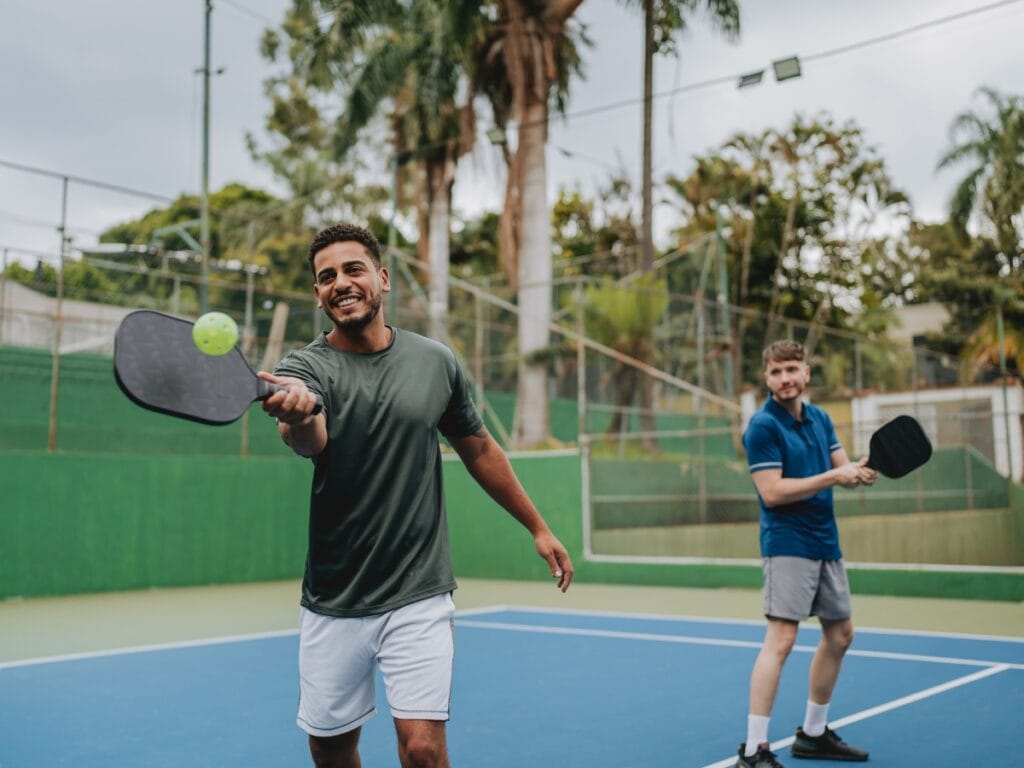
For many people trying racket sports for the first time, pickleball is the easier entry point. Its smaller court, lighter equipment, and straightforward rules make it accessible to players of almost any age or fitness level. Beginners can often rally successfully within their first session, which builds confidence and keeps them motivated to improve. Compared to the steeper learning curve of tennis, pickleball offers a gentler introduction to the fundamentals of hand-eye coordination, movement, and strategy.
Why Pickleball Welcomes Beginners and All Ages
Several factors make pickleball more beginner-friendly than tennis. The paddles are lightweight, so players experience less arm fatigue, and the plastic ball travels slower than a tennis ball, giving players more time to react. The underhand serve is easier to learn and master, removing one of the most challenging barriers that new tennis players face. And because the court is smaller, there’s less ground to cover, making it less physically demanding and easier on the joints.
This simplicity doesn’t mean the game lacks depth. Players can gradually build skills and develop more advanced strategies without feeling overwhelmed early on. As a result, pickleball attracts a wide range of participants, from children learning their first sport to older adults staying active in a low-impact way. Its accessibility is a major reason why the pickleball vs tennis debate often tilts toward pickleball for beginners.
Skill Development: A Tale of Two Sports
The learning process differs significantly between pickleball and tennis. In pickleball, developing control, placement, and touch is key. Players quickly learn techniques like the “dink,” a soft shot just over the net that’s crucial to strategy and rally building. Because of the smaller court and slower pace, tactical thinking and positioning can become part of a beginner’s game much sooner.
Tennis requires a longer progression before players feel confident in matches. Mastering overhand serves, refining groundstroke mechanics, and building the endurance needed for longer rallies take time and practice. Footwork is also more demanding in tennis, as players must cover a larger court and react to faster-paced shots. While both sports reward strategy and precision, tennis tends to place greater emphasis on raw athleticism and technique, especially in the early stages.
Comparing Physical Health Benefits in Older Players
Both pickleball and tennis offer excellent physical benefits, but they do so in different ways. Pickleball’s slower pace and shorter bursts of movement provide cardiovascular exercise while putting less stress on the joints, which is why it’s particularly popular among older adults. It helps improve balance, coordination, and agility without the high-impact strain often associated with larger courts and faster shots.
Tennis delivers a more intense workout overall, improving endurance, strength, and explosive power. However, the higher physical demands can increase the risk of overuse injuries, especially for players who are new to the sport or returning after a long break. For older athletes or those looking for a low-impact way to stay active, pickleball often emerges as the more sustainable choice.
Finding the Right Fit
When considering pickleball vs tennis, your goals, fitness level, and personal preferences should guide your choice. Pickleball’s approachable rules and easier learning curve make it ideal for beginners and players of all ages, while tennis offers a more challenging path that rewards power, stamina, and refined technique. Both sports provide social connection, physical fitness, and plenty of fun. If you’re new to racket sports, starting with pickleball can build confidence and skill, and you can always transition into tennis later if you’re looking for a new challenge.
Health Perks: How Pickleball and Tennis Boost Your Well-Being
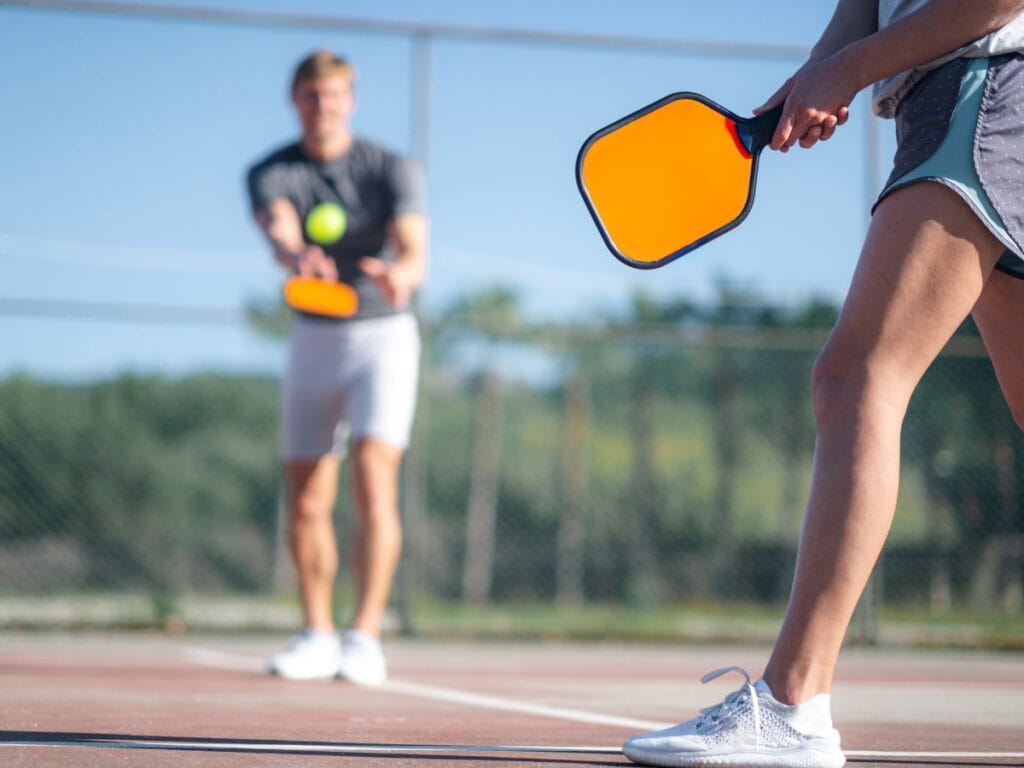
Both pickleball and tennis offer significant health benefits, but they do so in different ways. Each sport challenges your cardiovascular system, builds strength, improves coordination, and supports long-term fitness. Understanding how they differ can help you choose the one that best aligns with your goals, physical condition, and preferred style of play. Whether you’re looking for a low-impact workout or an intense athletic challenge, both options deliver results that extend beyond the court.
Cardio King or Queen: Which Is Better for Your Heart and Joints?
Pickleball provides a strong cardiovascular workout without putting as much strain on your joints. The smaller court size and slower pace reduce the impact on knees, hips, and ankles, making it a smart choice for people seeking a low-impact activity that still elevates the heart rate. Because it involves short bursts of movement and quick reactions, it also supports agility and coordination, which become increasingly important with age.
Tennis, in contrast, pushes cardiovascular endurance further. The larger court and faster ball speed demand longer sprints, powerful strokes, and sustained energy. This makes tennis an excellent choice for those who want a more intense workout and don’t mind the added physical demands. However, the higher impact may pose challenges for players with joint concerns. Ultimately, the pickleball vs tennis decision often comes down to how much intensity your body can comfortably handle.
Injury Report: Common Ailments and How to Prevent Them
While both sports are generally safe, they come with their own sets of common injuries. Pickleball players often deal with ankle sprains due to sudden changes in direction, so strengthening the muscles around the ankle and warming up thoroughly can reduce the risk. Shoulder strains can occur in both sports, particularly from repeated overhead motions, so incorporating rotator cuff exercises and proper stretching into your routine is essential.
Tennis players are more prone to overuse injuries like tennis elbow and knee stress because of the repetitive motions and frequent lunges involved in the game. Using proper grip technique, strengthening your forearms, and wearing supportive footwear can help prevent these issues. Paying attention to proper form, warming up before play, and gradually increasing intensity will go a long way in reducing the risk of injury in either sport.
Sharpen Your Skills: Agility, Balance, and Coordination Boosters
One of the biggest benefits of both pickleball and tennis is how they improve coordination and balance. The quick movements and directional changes build lower-body strength and stability, while trading volleys sharpens reflexes and reaction time. Serving and returning shots engage the core and strengthen the upper body, especially the dominant side.
These skills have practical benefits beyond the court. Improved balance reduces the risk of falls, enhanced coordination makes daily activities easier, and increased strength supports overall mobility. Whether you choose the fast-paced endurance of tennis or the joint-friendly agility of pickleball, you’ll gain physical improvements that enhance your health and quality of life.
Choosing the Right Fit for Your Health Goals
In the pickleball vs tennis comparison, both sports contribute to cardiovascular health, muscle strength, coordination, and agility. Pickleball is often the better option for those seeking a joint-friendly, accessible workout, while tennis offers a more vigorous challenge that builds endurance and power. The best choice depends on your fitness goals, physical condition, and how you want to move your body. Whichever you choose, both sports deliver long-term health benefits that keep you active, strong, and engaged.
Where to Play: Pickleball and Tennis Courts in Atlanta
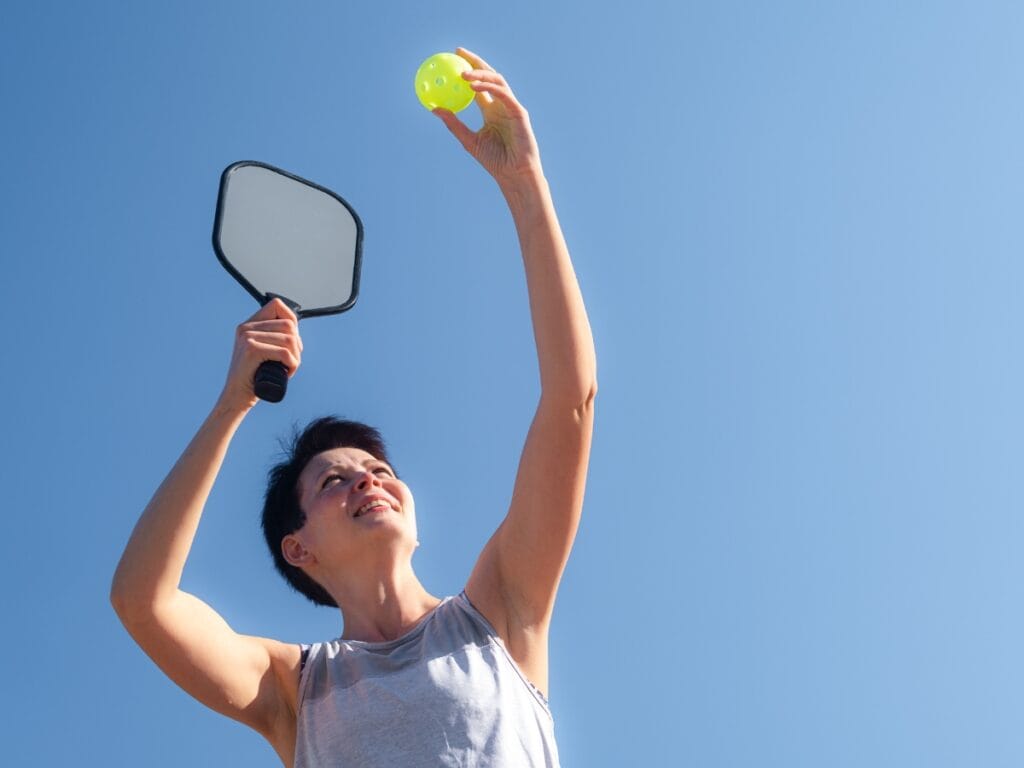
Atlanta offers a great mix of indoor and outdoor spots for both pickleball and tennis, from specialized courts to multi-sport facilities. Finding the right place makes it easy to fit regular play into your life.
Atlanta’s Top Pickleball Spots
Check out these popular places for pickleball in Atlanta:
- Suwanee’s indoor courts, complete with climate control and drop-in play
- Community center courts at local parks, often hosting evening leagues
- Dedicated outdoor courts at various recreation complexes
Having access to indoor play year-round means you can keep your game sharp, no matter the weather.
Transforming Tennis Courts for Pickleball
Here’s how you can adapt existing tennis courts for pickleball:
- Paint new lines using a color that stands out from the existing court markings.
- Set up portable nets at the standard 34-inch height in the middle.
- Consider surface treatments that ensure a consistent ball bounce.
- Implement shared reservation systems to make scheduling efficient.
This smart adaptation maximizes facility use and meets the rising demand for pickleball courts.
Finding Lessons and Groups in Atlanta
You can find beginner programs and social groups through:
- Indoor pickleball clinics at Suwanee locations
- Local park and recreation departments for tennis coaches
- Meetup groups that organize mixed-skill drop-in sessions
- Organizers of adult leagues for both sports
Family Fun & Social Play: Which Sport Wins in Atlanta?
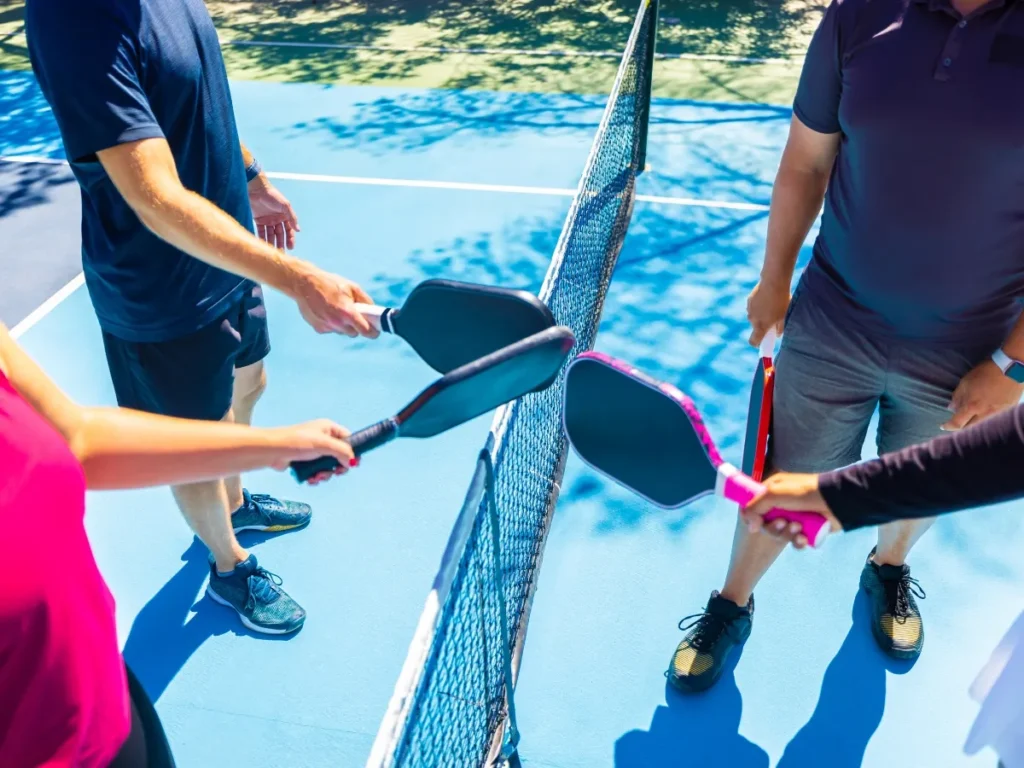
Both pickleball and tennis are great ways for families to stay active and spend time together, but they offer very different experiences when it comes to pace, complexity, and social interaction. Choosing the right one depends on what kind of environment you’re looking for. If you want something fast to learn, easy to set up, and highly social, pickleball may be the better fit. If you prefer a more traditional structure with competitive play and skill development over time, tennis might be the right choice. Understanding these differences helps families decide which sport will bring the most enjoyment and long-term engagement.
How Pickleball Builds Community and Connection
One of the biggest strengths of pickleball is its community-focused atmosphere. Games are typically shorter and played to 11 points, which means players can rotate in and out more often. This keeps sessions fresh and creates opportunities to meet new people and play with a variety of partners. Because doubles play is so common, teamwork and communication become a natural part of the experience, making it a welcoming environment for players of all ages and skill levels.
Many local pickleball groups host casual drop-in sessions, open play events, and all-ages tournaments. These settings encourage interaction and make it easy for newcomers to join without feeling intimidated. Whether you’re playing with family members or new friends, the social side of pickleball is one of the reasons it has become so popular in communities across Atlanta and beyond.
Tennis Clubs vs. Pickleball Groups: What’s the Difference?
The culture and structure around tennis and pickleball can feel very different. Tennis is often centered around membership-based clubs, scheduled court times, and organized matches or ladder play. This setup offers a more traditional and competitive environment, which can be great for players who want to focus on improving skills and playing structured matches.
Pickleball, on the other hand, tends to be more flexible and spontaneous. Many local parks and recreation centers host open play sessions where players can drop in without reservations. Partner rotations and shorter matches mean more variety in who you play with, and the atmosphere is typically more relaxed. This casual style of play makes it easier for families to participate together and for beginners to feel included right away.
Why Pickleball Often Takes the Crown for Family-Friendliness
When it comes to family play, pickleball has some clear advantages. The smaller court size and lighter paddles mean less physical strain, so kids, parents, and grandparents can all enjoy the game together. The rules are straightforward, which makes it easy for beginners to understand and start playing quickly. Because the ball moves at a slower pace and the rallies are shorter, players of different ages and abilities can compete on a more level playing field.
Tennis can also be a great family sport, but it often requires more time to learn the fundamentals and build the skills needed for longer rallies. That learning curve can be discouraging for younger players or those new to the game. Pickleball’s accessibility makes it a natural choice for families looking to spend quality time together while staying active.
The Verdict on pickleball vs tennis for Families
In the pickleball vs tennis debate, both sports have their place, but pickleball often edges ahead for family fun and community engagement. Its easy learning curve, social atmosphere, and inclusive nature make it ideal for multi-generational play and spontaneous games. Tennis offers a more structured and traditional experience, which appeals to those who enjoy competition and long-term skill development. Ultimately, the best choice depends on what your family values most—casual connection and quick fun, or structured play and a classic challenge.
Making the Call: Pickleball vs Tennis for Your Active Life?
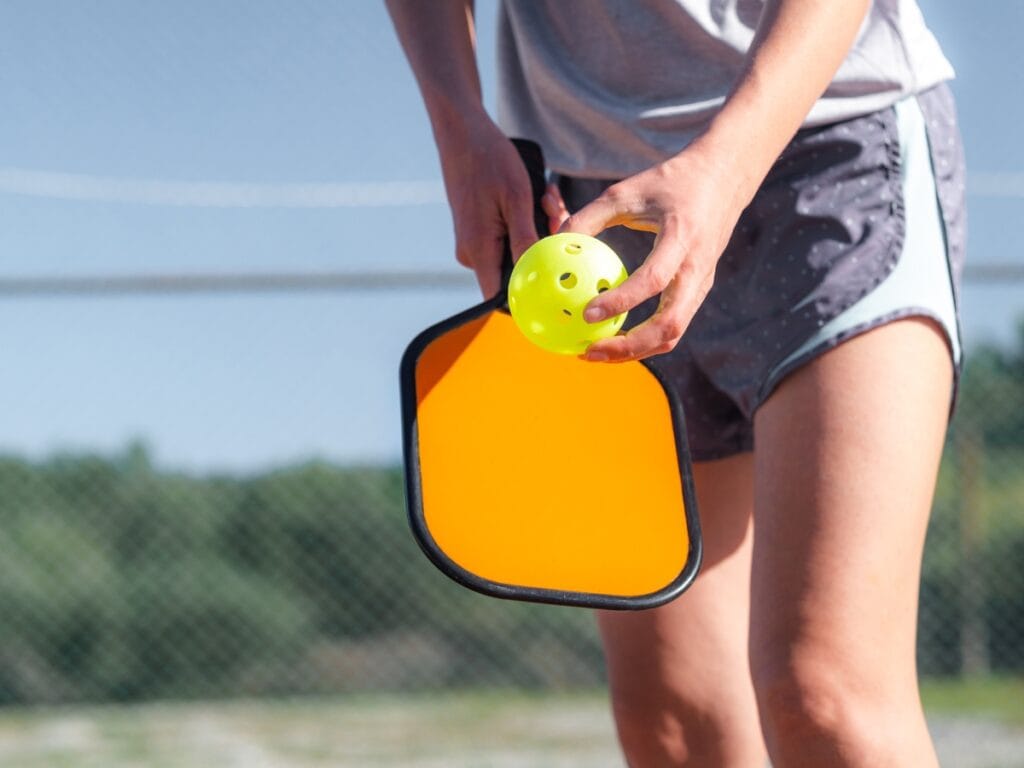
Choosing between pickleball vs tennis depends on what you’re looking to get out of the sport. Both are excellent for fitness, social connection, and skill development, but they differ in pace, learning curve, physical demands, and overall vibe. Deciding where you stand in the pickleball vs tennis debate comes down to your personal goals, lifestyle, and preferences. Whether you want a fast and accessible way to stay active or a more intense and technical challenge, understanding these differences will help you make the right choice.
Atlanta Adults: What to Consider When Choosing
Before committing to either sport, think about how each fits your current lifestyle and physical condition. If joint health is a concern or you’re looking for something low-impact, pickleball might be the better option. The smaller court and slower pace are easier on the body, making it accessible to a wider range of players. Tennis, by contrast, demands more endurance, strength, and speed, which can be a plus if you’re seeking a tougher workout or already have a strong fitness base.
The social setting also differs. Pickleball is known for its drop-in play and welcoming community, which can make it easier to meet new people and join games on the fly. Tennis often revolves around more structured environments like clubs, scheduled matches, and leagues. Your budget is another factor. Pickleball generally has lower startup costs, while tennis rackets, court fees, and lessons can add up more quickly. Considering these elements will help you choose the sport that best suits your needs.
Skill-Building vs. Pure Fun: Where Do You Fit?
Pickleball’s appeal lies in how quickly new players can pick it up. The rules are simpler, the equipment is lighter, and rallies often begin to flow within a single session. It’s a sport where strategy and placement matter as much as raw power, so improvement can happen quickly, which keeps motivation high.
Tennis takes longer to master but offers deep rewards for players who enjoy technical growth. Perfecting serves, groundstrokes, and footwork requires patience and consistent practice, but the payoff is a satisfying, full-body workout and a greater sense of progression. If you’re drawn to fast-paced fun and social play, pickleball is likely the better fit. If you thrive on precision, endurance, and steady improvement, tennis might be your sport.
Your Next Move: Getting Started in Atlanta
Once you’ve decided where you land in the pickleball vs tennis debate, getting started is easier than you might think. Find a nearby court or recreation center and set up your first game. Invest in basic equipment that suits your budget and skill level. Consider joining a beginner clinic or group lesson to learn proper techniques and build confidence early. From there, local leagues, social meetups, and drop-in sessions are great ways to stay active and improve your skills.
Both pickleball and tennis offer more than just exercise. They build coordination, boost cardiovascular health, and connect you with a community of fellow players. Whether you’re drawn to pickleball’s social, accessible nature or tennis’s challenging and competitive edge, the key is to choose the one that aligns with your goals and lifestyle. With regular play, either sport can become a fun and lasting part of your active routine.
Conclusion
Whether you’re drawn to the fast-paced action of pickleball or the classic challenge of tennis, the right sport for you depends on your fitness goals, social preferences, and desired learning curve. At Planet Pickle, we welcome players of all interests and skill levels with premier courts, expert-led programs, and a vibrant community atmosphere. Still deciding? Call 678-404-5792 today to book court time, join a beginner clinic, or tour our facilities. Your perfect match—whether paddle or racket—is waiting for you at Planet Pickle.

